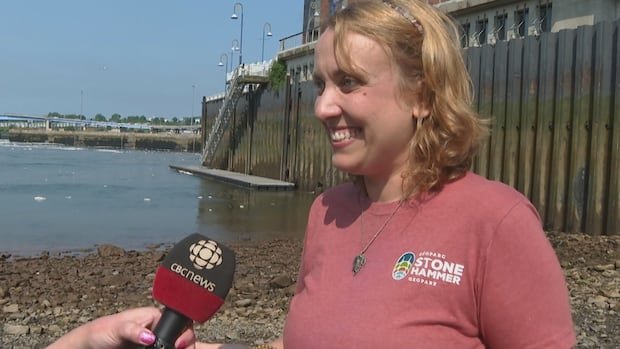Climate change, often viewed as a modern concern, actually finds its origins in events dating back almost 12,000 years to the conclusion of the last Ice Age, according to a geoscience educator from New Brunswick. Catrina Russell, the education co-ordinator for Stonehammer Geopark, emphasized the cyclical nature of climate change, highlighting how shifts in plate tectonics and continental orientation have historically influenced climate fluctuations. The massive influx of water into the oceans from melting ice at the end of the Ice Age significantly raised sea levels and sculpted the unique tides of the Bay of Fundy.
Russell, a researcher and educator at the 2,500-square-kilometre geopark in southern New Brunswick, recently led a tour named Rockin Uptown Tour alongside Jack Quirion, a biologist and climate change projects co-ordinator for ACAP Saint John. Their aim is to contextualize geological and climate science within historical and contemporary frameworks to enhance public understanding of these phenomena and their impacts.
The lingering effects of the Ice Age’s conclusion continue to be felt in the region, with rising temperatures attributed to both human-induced climate change and natural environmental shifts. Russell noted that the current period marks the tail end of the Ice Age, resulting in ongoing temperature increases, albeit at an accelerated rate. The geological landscape of the area has played a pivotal role in shaping decisions made by past generations, decisions that continue to influence the lives of present-day inhabitants.
The evolution of Saint John’s landscape over time, including human interventions like waterfront infill projects, reflects the dynamic interaction between geological forces and human activities. Quirion, particularly concerned with rising sea levels and their impact on shorelines, emphasizes the need for sustainable development practices that consider the long-term effects of erosion and sea-level rise on coastal infrastructure.
ACAP Saint John is actively engaged in researching climate change impacts in the Stonehammer region and developing mitigation strategies to address challenges like erosion and flooding. Quirion stressed the importance of adopting environmentally friendly solutions, highlighting the effectiveness of nature-based approaches in combating erosion and flood risks, rather than relying solely on traditional infrastructure like rock walls.
By promoting a holistic approach that integrates natural solutions with built infrastructure, ACAP aims to empower communities to take proactive steps that safeguard both the environment and the well-being of local residents.

